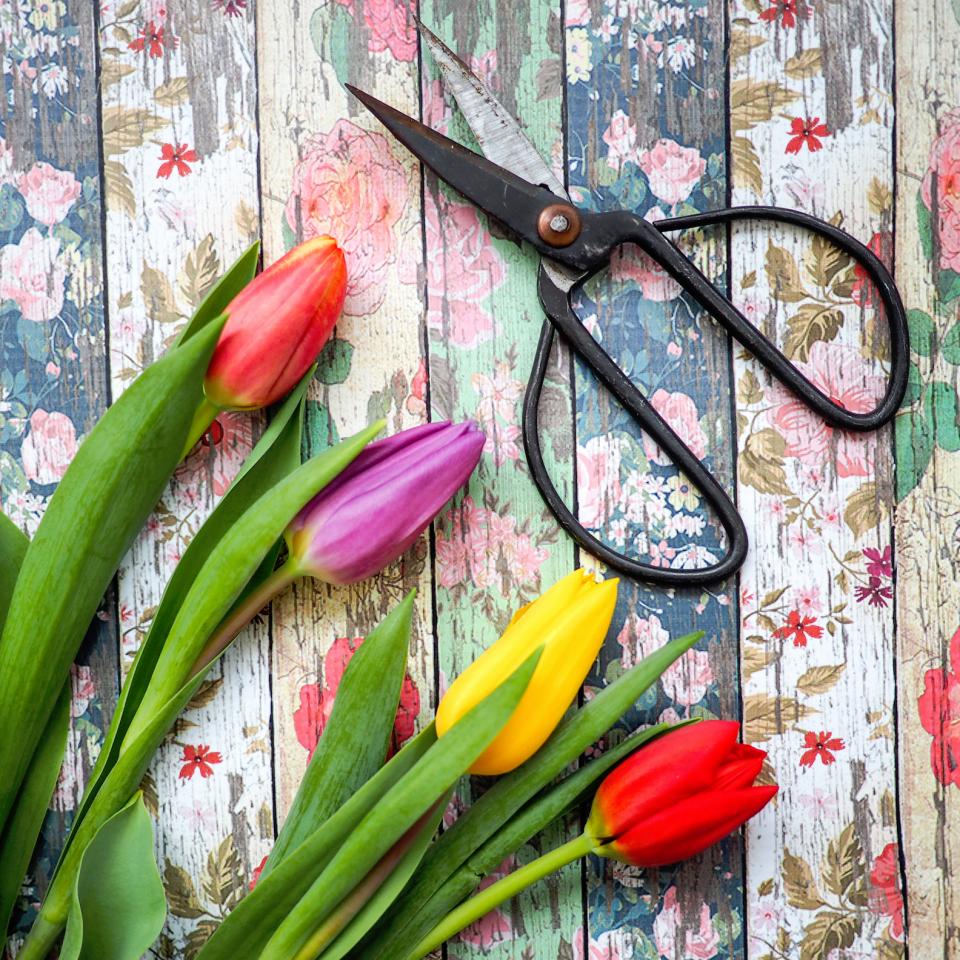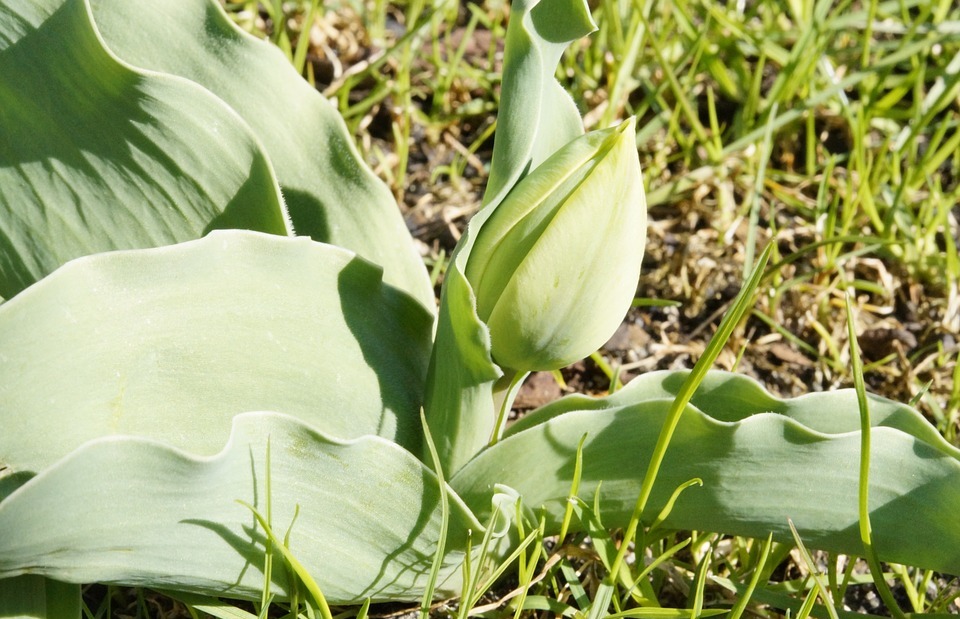This article delves into the question of whether tulips are poisonous to cats, exploring the specific toxins they contain, the symptoms of tulip poisoning, and the steps you can take if your cat has ingested these flowers. We'll also examine the risks associated with different parts of the tulip plant, offer detailed advice on preventing tulip poisoning, and provide answers to frequently asked questions about this topic.
Part 1: The Toxicity of Tulips to Cats

1.1: Unveiling the Culprit: Tulip Alkaloids
Tulips, captivating with their vibrant colours and graceful forms, unfortunately harbour a hidden danger for our feline companions. They belong to the Liliaceae family, a group known for containing toxic compounds called alkaloids. These alkaloids, specifically tulipalin A and tulipalin B, are the primary culprits behind the harmful effects observed in cats who ingest tulips.
1.2: Unpacking the Mechanism of Toxicity
While the exact mechanism of action remains under investigation, it's believed that these tulip alkaloids disrupt cellular processes, leading to inflammation and dysfunction. This disruption primarily affects the digestive system, resulting in a range of gastrointestinal symptoms.
1.3: A Focus on Tulip Bulbs: The Most Toxic Component
The tulip bulb, often mistaken for a harmless onion, contains the highest concentration of these toxic alkaloids. Even a small nibble of the bulb can trigger severe poisoning in cats.
1.4: Stems and Leaves: A Moderate Risk
While less concentrated than the bulb, the stems and leaves of tulips still contain a significant amount of these alkaloids. Ingestion of these parts can lead to varying degrees of poisoning, depending on the quantity consumed.
1.5: Flowers: The Least Toxic, But Still a Threat
The flowers of the tulip are considered the least toxic part of the plant. However, it is still crucial to prevent your cat from chewing or ingesting any part of the tulip, as even small amounts of petals can cause mild symptoms of poisoning.
Part 2: Symptoms of Tulip Poisoning in Cats

2.1: Early Warning Signs: Recognising the Danger
It's essential to be aware of the early signs of tulip poisoning in your cat. These usually manifest within a few hours of ingestion and may include:
- Excessive drooling: This is often a first indicator, as the alkaloids irritate the mouth and digestive tract.
- Vomiting: The body attempts to expel the toxic substances through vomiting.
- Diarrhoea: Another symptom of gastrointestinal distress caused by the alkaloids.
- Loss of Appetite: The irritation in the digestive tract can make your cat reluctant to eat.
- Lethargy: Your cat may become sluggish and less active than usual.
2.2: Advanced Symptoms: Seeking Immediate Veterinary Care
If left untreated, tulip poisoning can progress to more severe symptoms that require immediate veterinary attention. These include:
- Difficulty breathing: This can be caused by swelling of the throat or other respiratory complications.
- Seizures: These are a sign of severe neurological involvement, indicating a serious toxic reaction.
- Coma: In severe cases, the cat may lose consciousness and become unresponsive.
- Heart problems: The toxins can disrupt the heart rhythm and function.
- Liver damage: Long-term consequences of tulip poisoning can include liver damage.
2.3: Severity Varies: The Importance of Observation
The severity of tulip poisoning can vary based on factors like the amount ingested, the cat's size, and its individual sensitivity to the alkaloids. Smaller cats are generally more susceptible to the toxic effects compared to larger cats.
Part 3: The Risks Associated with Different Parts of the Tulip Plant

3.1: The Bulb: The Most Toxic Component
The bulb of the tulip is the most dangerous part of the plant. It contains the highest concentration of tulipalin A and tulipalin B, making it the most likely to cause severe poisoning. Even a small piece of the bulb can be very dangerous for a cat.
3.2: Stems and Leaves: Moderate Risk
While not as concentrated as the bulb, the stems and leaves still contain significant amounts of the alkaloids. Ingesting larger quantities of these parts can still lead to poisoning, especially in smaller cats or cats with sensitive stomachs.
3.3: Flowers: Relatively Less Toxic
The flowers of the tulip are generally considered the least toxic part of the plant. However, this doesn't mean they are completely safe. Even small amounts of petals can cause mild symptoms of poisoning. It's best to err on the side of caution and prevent your cat from having any contact with the flowers.
Part 4: Preventing Tulip Poisoning in Cats
4.1: Keeping Tulips Out of Reach: Safeguarding Your Cat
The best approach to preventing tulip poisoning is to keep these flowers entirely out of your cat's reach. This involves:
- Storing tulips in secure locations: Place bouquets and vases on high shelves, out of the reach of curious paws and noses.
- Supervising your cat: If you have tulips in your home, closely supervise your cat when it is around these flowers, especially if they are in a vase or bouquet.
- Choosing alternative flowers: Opt for non-toxic alternatives like sunflowers, gerbera daisies, or orchids, which are less likely to cause harm to your feline friend.
4.2: Training Your Cat: Encouraging Good Behaviour
Training your cat to avoid plants can be an effective way to prevent poisoning. This can be achieved through:
- Positive reinforcement techniques: Reward your cat for staying away from tulips with praise and treats.
- Deterrent sprays or citrus peels: The smell of citrus is generally unpleasant to cats, so placing citrus peels around tulip plants or using commercially available deterrent sprays can discourage your cat from approaching them.
Part 5: What to Do If Your Cat Ingests Tulips
5.1: Act Fast: Immediate Action is Key
If you suspect your cat has ingested any part of a tulip, time is of the essence. Seek veterinary attention immediately.
5.2: Contact Your Vet: Seeking Expert Advice
Call your veterinarian and explain the situation in detail. They will be able to provide guidance and recommend the best course of action. They may suggest inducing vomiting or providing supportive care.
5.3: Gather Information: Providing Essential Details
When contacting your vet, be prepared to provide them with:
- The type of tulip: If you know the specific type of tulip your cat ingested, this can be helpful for your vet.
- The amount ingested: Estimate the amount of tulip your cat may have eaten, if possible.
- The time of ingestion: Let your vet know when you noticed your cat ingesting the tulips.
- Any symptoms your cat is exhibiting: Describe the symptoms you have observed, such as vomiting, diarrhoea, or lethargy.
Part 6: Treatment for Tulip Poisoning in Cats
6.1: Inducing Vomiting: Removing Remaining Toxins
Your vet may recommend inducing vomiting, particularly if the ingestion occurred within a few hours. This helps remove any remaining tulip material from the stomach before the toxins are absorbed into the bloodstream.
6.2: Supportive Care: Addressing Symptoms
Treatment for tulip poisoning often involves supportive care to manage the symptoms and prevent complications. This may include:
- Fluid therapy: This helps prevent dehydration, which can be a serious risk with vomiting and diarrhoea.
- Anti-emetics: These medications help control vomiting and reduce gastrointestinal irritation.
- Pain medication: Pain relievers can help alleviate discomfort caused by the toxic reaction.
- Activated charcoal: This substance can bind to the toxins in the digestive tract, preventing their absorption into the bloodstream.
6.3: Long-Term Monitoring: Ensuring Full Recovery
Depending on the severity of poisoning, your cat may require hospitalization for close monitoring and supportive care. Your vet will closely monitor your cat's condition and administer appropriate treatments until they are stable and recovering well.
Part 7: Prognosis for Tulip Poisoning in Cats
7.1: Factors Affecting Outcome: Individual Circumstances
The chances of a full recovery depend on several factors, including the amount of tulip ingested, the cat's size, its overall health, and how quickly treatment is initiated. Smaller cats are generally more vulnerable to the effects of tulip poisoning.
7.2: Early Intervention: The Key to Positive Outcomes
Early detection and intervention are crucial for a positive outcome. Prompt veterinary attention and supportive care significantly increase the chances of a full recovery.
7.3: Long-Term Effects: Potential for Complications
In some cases, even with prompt treatment, tulip poisoning can lead to long-term complications. Liver damage is a potential consequence, and careful monitoring is essential.
Part 8: FAQs about Tulip Poisoning in Cats
8.1: Are all types of tulips poisonous to cats?
Yes, all types of tulips contain alkaloids that are toxic to cats. Regardless of colour, variety, or size, all tulips pose a risk to your feline friend.
8.2: Is it safe to give my cat milk if it has eaten tulips?
No, giving your cat milk after ingesting tulips is not recommended. Milk can actually worsen the symptoms of poisoning and should be avoided. It's best to wait for veterinary advice before giving your cat anything to eat or drink.
8.3: What should I do if I can't reach my vet immediately?
If you suspect your cat has ingested tulips and you can't reach your vet immediately, try to induce vomiting by following your vet's instructions. If vomiting doesn't occur within 15 minutes, contact your vet again.
8.4: Can I use home remedies for tulip poisoning?
No, it's crucial to seek professional veterinary care for tulip poisoning. Home remedies can be ineffective and potentially dangerous.
8.5: How long will it take for my cat to recover from tulip poisoning?
The recovery time depends on the severity of poisoning and the individual cat. It's important to follow your vet's instructions for aftercare and monitor your cat closely for any signs of complications.
8.6: Are there any other plants that are toxic to cats?
Yes, many other common houseplants and garden plants are toxic to cats. These include lilies (different from tulips), azaleas, daffodils, hydrangeas, and many others. Always research the safety of any plant you bring into your home if you have a cat.
Everyone is watching
-

Are Cat Ribs Flexible? Understanding Their Anatomy
CATS & KITTENSThis article delves into the fascinating world of feline anatomy, exploring the flexibility of cat ribs and ho...
-

Can Cats Eat Bananas? (Everything You Need to Know)
CATS & KITTENSThis article dives into the intriguing question of whether cats can safely enjoy the sweet, yellow fruit, bana...
-

Cat Lifespan: How Long Do Cats Live?
CATS & KITTENSThis comprehensive guide explores the factors influencing the lifespan of our feline companions, providing ins...
-

Can Cats Get COVID-19? What You Need to Know
CATS & KITTENSThis article will delve into the fascinating world of feline COVID-19 susceptibility. We'll explore whether ca...
-

Can Cats Eat Eggs? A Complete Guide to Egg Safety for Your Feline Friend
CATS & KITTENSWhen it comes to treating our furry companions, we all want to ensure we're doing what's best for them. Eggs...
